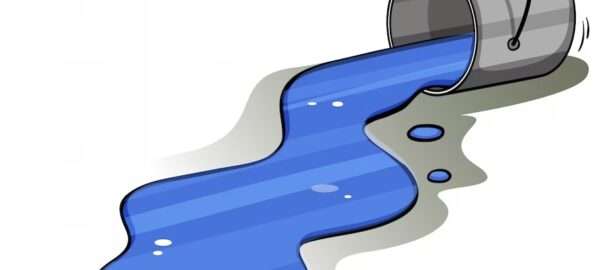Before we discuss the process of Water Damage Restoration, let us describe to you what exactly it is.
What is Water Damage Restoration?
It is the process that involves restoring the water-damaged property to its previous condition. On the surface, this appears to be an easy task. However, drying out a property is a difficult task that can take many days to weeks depending on the size of the damaged area and the extent of damage. Most property owners mistakenly believe that water damage restoration is simply surface drying, but this is neither accurate nor safe.
Water damage restoration is comprehensive. While it might begin with the removal and extraction of water. The next step is to dry out the space using humidifiers and air movers, which involves restoring the contents, removing the damaged items, and rebuilding them.
Why is Water Damage Restoration Important?
Water damage can be both a cause and a result of structural damage. This is why water damage restoration is so crucial. Water damage and structural damage are inseparable. And the presence of one frequently indicates the presence of the other. Moreover, it can cause walls, ceilings, and even floors to fall.
So, ignoring water damage or failing to respond quickly enough might expose you to long-term health concerns. And, minimizing the relevance of water damage repair reduces the expertise, knowledge, and experience required to conduct such a job. Also, it puts the lives of people staying in the building at risk.
So as you now know why water damage repair is important, now let us discuss what is the process of it.
The Water Damage Restoration Process
Immediate Safety Measures
Well, this is the first step and requires your attention before calling professionals. When you notice water damage, you should ensure the immediate safety of everyone in the house. And also protect yourself from additional injury.
Moreover, if the water damage is the consequence of a problem such as a busted pipe or excessive flooding, make sure all of your family and pets are out of the house. Plan to stay with friends or family or at a hotel during the restoration procedure.
Inspection
It’s time to evaluate the damage after you’ve verified everyone’s safety. Now, here starts the tasks of professionals. Because not all damage is evident to the untrained eye, inspection is best left to a specialist.
An expert will advise you on whether you can restore materials and structures and what needs to be removed. Moreover, if the cause of the damage is unknown, a specialist can assist in determining the source of the issue. Then they will explain the best course of action.
Water Extraction
The next step is water extraction. There are several methods for removing water.
If there is only a small amount of water in a limited place, a bucket and some towels may suffice.
On the other hand, in the case of flooding or big pools of water requires specialized equipment. The professionals with the best equipment extract water from the spaces.
Cleaning and Drying
After removing the water, professionals sanitize the area. To avoid mold growth and further damage, they do cleaning and drying. Even if everything looks to be clean and dry, professionals give the area a few days to dry entirely.
During this time, open windows and place fans throughout your home to bring in as much fresh air as possible.
Repairs and Restoration
When everything is clean and dry, professionals start making repairs. While certain materials will have to be discarded totally, a restoration specialist often rescues many structural components in your home.
This treatment differs according to the extent of the damage. It can range from little fixes like patching up paint to major foundation overhauls.
How to Avoid Water Damage in the Future
Water damage is an unavoidable reality that many people must cope with year after year.
While it is impossible to forecast and control weather patterns that may cause flooding, many types of water damage can be avoided by incorporating a few preventive procedures into your home care routine.
- Routine Structural Inspection
- Regular Cleaning
- Check Appliances and Piping
Conclusion
To summarise, water damage restoration is an important procedure that entails more than just surface drying. An expert applies so many steps in restoring your property or area after water damage.
It is your foremost responsibility to avoid any water damage to your properties. But still, if it is not in your control then call the professionals to restore everything.

